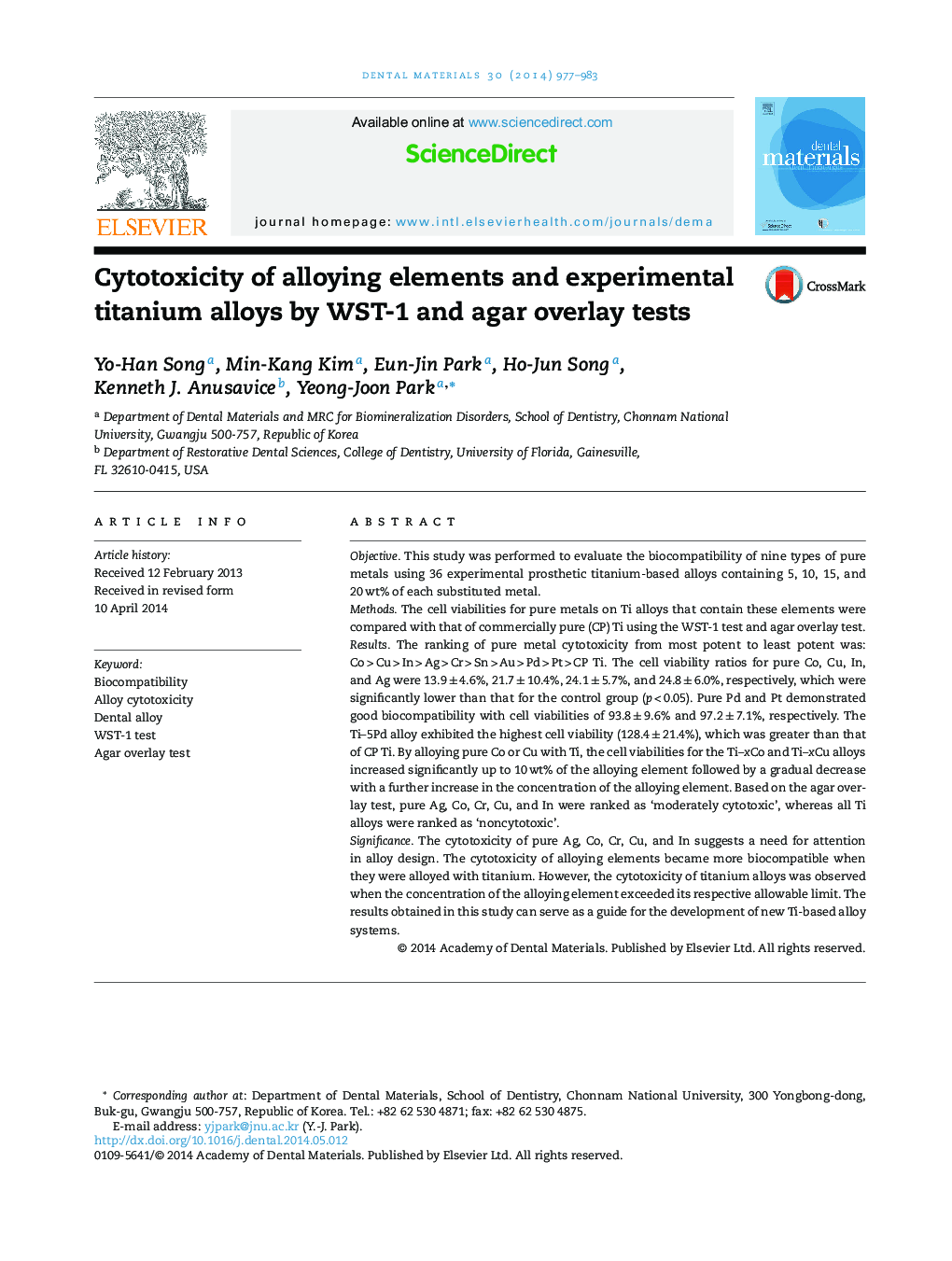| کد مقاله | کد نشریه | سال انتشار | مقاله انگلیسی | نسخه تمام متن |
|---|---|---|---|---|
| 1421096 | 986393 | 2014 | 7 صفحه PDF | دانلود رایگان |

ObjectiveThis study was performed to evaluate the biocompatibility of nine types of pure metals using 36 experimental prosthetic titanium-based alloys containing 5, 10, 15, and 20 wt% of each substituted metal.MethodsThe cell viabilities for pure metals on Ti alloys that contain these elements were compared with that of commercially pure (CP) Ti using the WST-1 test and agar overlay test.ResultsThe ranking of pure metal cytotoxicity from most potent to least potent was: Co > Cu > In > Ag > Cr > Sn > Au > Pd > Pt > CP Ti. The cell viability ratios for pure Co, Cu, In, and Ag were 13.9 ± 4.6%, 21.7 ± 10.4%, 24.1 ± 5.7%, and 24.8 ± 6.0%, respectively, which were significantly lower than that for the control group (p < 0.05). Pure Pd and Pt demonstrated good biocompatibility with cell viabilities of 93.8 ± 9.6% and 97.2 ± 7.1%, respectively. The Ti–5Pd alloy exhibited the highest cell viability (128.4 ± 21.4%), which was greater than that of CP Ti. By alloying pure Co or Cu with Ti, the cell viabilities for the Ti–xCo and Ti–xCu alloys increased significantly up to 10 wt% of the alloying element followed by a gradual decrease with a further increase in the concentration of the alloying element. Based on the agar overlay test, pure Ag, Co, Cr, Cu, and In were ranked as ‘moderately cytotoxic’, whereas all Ti alloys were ranked as ‘noncytotoxic’.SignificanceThe cytotoxicity of pure Ag, Co, Cr, Cu, and In suggests a need for attention in alloy design. The cytotoxicity of alloying elements became more biocompatible when they were alloyed with titanium. However, the cytotoxicity of titanium alloys was observed when the concentration of the alloying element exceeded its respective allowable limit. The results obtained in this study can serve as a guide for the development of new Ti-based alloy systems.
Journal: Dental Materials - Volume 30, Issue 9, September 2014, Pages 977–983